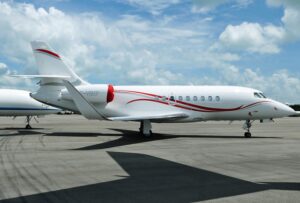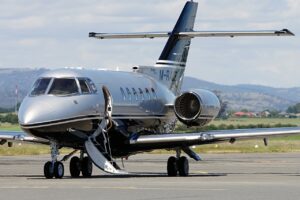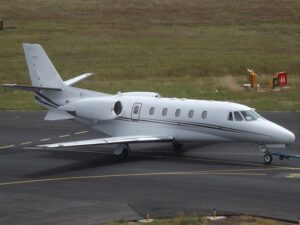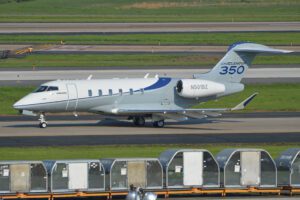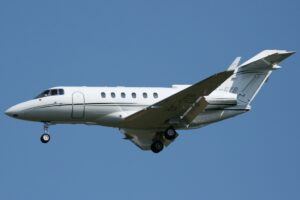 There’s a point where only the biggest will do, and going from that Gulfstream G5 to the Bizliner category of private jets, your mom must be really proud. Typical Bizliner customers include Heads of State, royalty, celebrities, top executives, Fortune 100 companies, and the like. These mega jets occupy the same ground space as many large-cabin business jets, but the the Boeing Business Jet 737Max, the Global 7500, and the Airbus ACJ319 take private air travel to another world. Many of these wide body behemoths have full bedrooms, seating for the entire executive staff, and the comfort of the most luxurious hotels. They are ideal for people who need to maximize their time and control their environment to their personal exacting standards. We will look first at the Jet that originated the Bizliner terminology, the BBJ, Boeing Business Jet.
There’s a point where only the biggest will do, and going from that Gulfstream G5 to the Bizliner category of private jets, your mom must be really proud. Typical Bizliner customers include Heads of State, royalty, celebrities, top executives, Fortune 100 companies, and the like. These mega jets occupy the same ground space as many large-cabin business jets, but the the Boeing Business Jet 737Max, the Global 7500, and the Airbus ACJ319 take private air travel to another world. Many of these wide body behemoths have full bedrooms, seating for the entire executive staff, and the comfort of the most luxurious hotels. They are ideal for people who need to maximize their time and control their environment to their personal exacting standards. We will look first at the Jet that originated the Bizliner terminology, the BBJ, Boeing Business Jet.
#1 Bizliner the BBJ Boeing Business Jet 737 Max
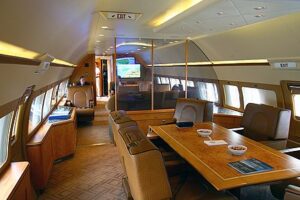
Mac Daddy #1 of the bizliner gang is the BBJ Boeing Business Jet. These versions of Boeing’s popular commercial jets are modified to suit the whims and fancies of ‘its good to be king’ owners. Heads of state, countries, internet moguls, and Hollywood’s box office dynamos take a 737 MAX, 777, 777x, 787 or the 747-8 and turn them into 41,000 ft high altitude hotels or corporate boardrooms. The BBJ 737 Max can fly to a range of 6000 nautical miles with the highest possible take-off weights. The 737 Max have integrated airstairs to allow independent operations at remote airfields. They have auxiliary fuel tanks in the cargo compartments to achieve those aforementioned ranges. They also have a unique low cabin altitude system that will maintain a maximum cabin altitude of 6,500 feet even when flying near 41,000 ft which vastly improves passenger comfort. The BBJ Max boasts a reasonably low operating cost drawing on its commercial aircraft roots so it can cost significantly less than purpose-built business jets. They get this ability from LUMP, a strangely named system which stands for low utilization maintenance program, which stretches out the maintenance intervals for a BBJ operator making major checks every 4 years and heavier checkouts every 12 years. The 787 Dreamliner version of the BBJ is a longer range aircraft capable of 9,960 nm with 25 passengers. The recently introduced 777X casts a wider net with a range of 11,835 nm. To compare the cabin areas of these aircraft, the cabin area of the 737 MAX is from 884 to 1,120 sq ft, the 787 is from 2,340 to 2,688 sq ft, and the 777X is from 3,256 to 3,689 sq ft. There are many older BBJ and BBJ1s available for charter that were based on the 737-700 and 737-800. Initially these business jets were operated by many Fortune 100 companies, but after the 2008 financial systems meltdown many are now registered to hide the owners identities and obscure their movement. The 737 MAXs are powered by CFM International LEAP (Leading Edge Aviation Propulsion) high-bypass turbofan engines. The 787s are powered by either GE Electric GEnx dual rotor/axial flow turbofans or Rolls-Royce Trent 1000s. Finally, the 777Xs will get their power from the General Electric GE9X developed by General Electric exclusively for the Boeing 777X. They have a larger fan and advanced materials like ceramic matrix composites (CCMCs), and higher bypass compression ratios giving them improved fuel efficiency. To charter a BBJ 737 MAX you will pay around $12,000* USD per hour and up based on model and year.
#2 Bombardier Global 7500
 The Global 7500 is an industry flagship. It has a long range near 7,700 nm and a max speed of Mach 0.925 with 19 passengers. The ride is ultra smooth achieved via the Smooth Flex Wing technology that was engineered to give maximum control and agility at all speeds. The cabin space is gigantic and it can be designed to have four true living spaces with an available Master suite as well as a dedicated crew suite and kitchen. The cabin air is filtered by Bombardier’s Pur Air HEPA filtration system capturing 99.99% of allergens, bacteria, and viruses. Large and evenly spaced windows give the cabin more natural light than any other cabin in business aviation. The Soleil lighting system is aviation’s first circadian rhythm-based cabin lighting designed to combat jet lag. In the cockpit, the 7500 features advanced fly-by-wire technology and a permanent side-facing jump seat. It is powered by GE Passport Engines designed specifically for the Global 7500. The 7500 is happiest playing in the troposphere with an initial cruise altitude of 43,000 ft and a max operating altitude of 51,000 ft. The interior cabin volume is 2,786 cu ft with a height of 6.2 ft and interior width of 8 feet. To charter a Global 7500 you will start around $15,900* USD per hour to as high as $20,000*USD per hour.
The Global 7500 is an industry flagship. It has a long range near 7,700 nm and a max speed of Mach 0.925 with 19 passengers. The ride is ultra smooth achieved via the Smooth Flex Wing technology that was engineered to give maximum control and agility at all speeds. The cabin space is gigantic and it can be designed to have four true living spaces with an available Master suite as well as a dedicated crew suite and kitchen. The cabin air is filtered by Bombardier’s Pur Air HEPA filtration system capturing 99.99% of allergens, bacteria, and viruses. Large and evenly spaced windows give the cabin more natural light than any other cabin in business aviation. The Soleil lighting system is aviation’s first circadian rhythm-based cabin lighting designed to combat jet lag. In the cockpit, the 7500 features advanced fly-by-wire technology and a permanent side-facing jump seat. It is powered by GE Passport Engines designed specifically for the Global 7500. The 7500 is happiest playing in the troposphere with an initial cruise altitude of 43,000 ft and a max operating altitude of 51,000 ft. The interior cabin volume is 2,786 cu ft with a height of 6.2 ft and interior width of 8 feet. To charter a Global 7500 you will start around $15,900* USD per hour to as high as $20,000*USD per hour.
#3 Airbus ACJ319
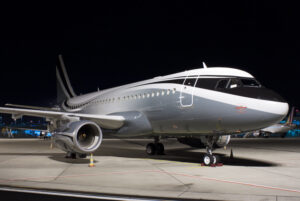
The ACJ319 is the corporate version of the Airbus A319. It has removable extra fuel tanks which are installed in the cargo department giving it a range of 6,000 nautical miles and a service ceiling of 39,000 ft. The ACJ319 can be configured for 19 to 50 passengers. The power comes from either CFM International CFM56 high-bypass turbofans or the IAE V2500, a two-shaft high-bypass turbofan built by International Aero Engines. The aircraft is very popular with heads of state due to the flexibility of the cabin thanks to a number of partitions enabling it to provide up to 6 separate zones. The zones can accommodate up to 19 passengers and can contain bedrooms, dining areas, and lounges. The other ACJ series jets offered as Bizliners are the 320, 321, and the ACJ319neo/ACJ320neo. The ACJ319neo may carry 8 passengers while the ACJ320neo is built to carry up to 25 passengers. They will have CFM LEAP or Pratt & Whitney PW1000Gs lower fuel-burn engines providing additional range along with lower engine noise and a comfortable cabin altitude not exceeding 6,400 ft. There are also the bigger models like the 340, 350, and the 380. The most recent market entrant is the ACJ TwoTwenty a variant of the A220-100. It has a range of 5,650 nm and a cabin space of 790 sq ft. The ACJ319 has a cabin volume of 5,843 cu ft with an overall cabin width of 12’1″ and a cabin height of 7’4″. To charter an Airbus ACJ319 you can expect to spend in the neighborhood of $18,600* USD per hour.
We are not shy about the expression “if you have to ask you can’t afford it” so to give you an idea of the purchase price of these jets in the “previously enjoyed” preowned market, the ACJ319neo will sell for around $100 million dollars. Just as with mega homes and yachts, a new owner will likely want to gut the interior in order to install their personal design touches. Luckily, you don’t have to own one to experience the joy of riding in one and we’d love to help you achieve that exact wish. This lineup of our three favorite Bizliners certainly excites us and is the perfect fodder for our holiday dreams. We will be enjoying the holidays with family and friends so our next blog post about air charter topics will be January 2nd, 2023.
Until Then, Be Social, Fly Private! Sign Up Today! Follow us on Facebook Follow us on Instagram
*These are base hourly rates per craft type with no ferry times, FET taxes, taxi time, or fuel surcharges. Typical final hourly rates will be higher based on category and timing.




